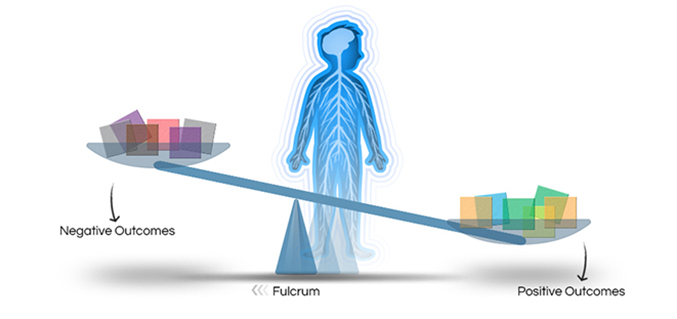
One of the most important questions that researchers and those of us who deal with children, adolescents and young people ask ourselves is why there are people who, although they grow up in hostile and insecure environments or have been exposed to traumatic events, such as child abuse or other contexts of violence, they overcome and develop a full and happy life; while others who have lived a less traumatic childhood lead a chaotic life full of problems and insecurities. What is it that makes some people stronger and more resilient than others?
We call this ability to tolerate, be strong and face adversity resilience. Resilience is a dynamic concept that has become fashionable in recent years, especially as a result of the covid-19 pandemic.
It is defined as “the capacity of an individual to resist or recover from significant challenges that threaten their stability, viability or development and come out of it transformed”.
Studies show that people with high levels of resilience have good physical and mental health . They can function in life adequately despite adverse events.
What makes up resilience?
Defining and classifying which dimensions and components are associated with resilience is tremendously complicated due to the heterogeneity and diversity of the associated factors. Several authors have proposed models , but none of them have been developed from scientific evidence, but from their opinion as experts.
Due to these limitations, we have developed the Individual And Environmental Resilience Model (IERM) . This model is based on a systematic review of the studies that have scientifically defined and categorized the dimensions and protective factors related to resilience. Dimensions and factors that are significantly associated with protecting us from illnesses and mental health problems.
We have found that resilience is a complex and multidimensional construct, in which many factors can interact and can be used or activated depending on the circumstances and abilities of the subject. Obviously, not all resilient factors are used at all times and in all subjects. Depending on the characteristics of the subject, the problem he has to face and his abilities, he will activate some factors or others.
Our model: two dimensions, 60 factors
Thus, to develop the IERM model, more than 60 resilient factors have been included, grouped into two large dimensions, the individual and the environmental.
Each of these dimensions has been classified into five domains.
The individual dimensions are:
- Genetic and biological predisposition.
- behavioral factors.
- cognitive factors.
- emotional factors.
- Communicative skills
Environmental dimensions include:
- The family.
- The school.
- The companions.
- Culture.
- Community.
In addition, the study has allowed us to verify that the acquisition of certain individual skills and tools to face adversity is as important as the environmental factors that surround the individual.
The role of self-regulation
The individual factors that protect us against adversity more effectively are, from greater to lesser evidence:
- Emotional self-regulation, that is, knowing how to properly manage our emotions.
- Be empathetic and tolerant with others.
- Doing physical activity.
- Have life goals and aspirations.
- be smart
Among the environmental factors, the most important factors, also ordered from highest to lowest, are:
- Receive quality care from their parents.
- Have access and know what resources are needed in case you need to ask for help.
- Social, family and peer support, not only real but also perceived.
- The feeling of belonging both to the school or institute and to the society in which they live.
Skills and support networks
Therefore, if we want our children and young people to be resilient in the face of adversity, we must take all these aspects into account.
First: we must teach them to correctly identify, manage and express their emotions, and help them define what their life goals and goals are, and promote healthy habits such as physical exercise.
Second: we observe that many factors that we have described previously are related to a social component and the establishment of support networks. Therefore, it is necessary to establish a series of resources in our community, from the institutions and from the educational field. These include guaranteeing the quality of care by their parents and working on empathy and tolerance towards others.
Author Bios: Pere Castellvi Obiols is a Lecturer in the Public Health Area of the Department of Medicine and Maria Creta Llistosella Piñero is a Professor of Nursing both at the International University of Catalonia
